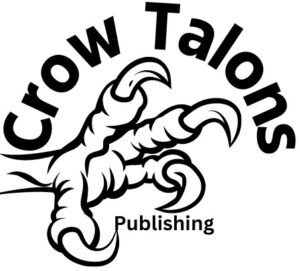
Photo credit: Eskay Lim – Unsplash
By Debbie Burke
@burke_writer
Recently my computer spent a couple of days in the shop. No social media? No problem! But no internet and no email—that was difficult.
Unable to write or research, I cast around looking for a project to fill normal writing hours. My gaze fell upon the two-drawer filing cabinet crammed with writing stuff.
For years, I’ve invented delays to avoid going through those files: I’ll organize them as soon as I finish this book; as soon as I finish beta reading a colleague’s manuscript; as soon as I give that PowerPoint presentation; as soon as I meet this article deadline; and so on and so on…
Embarrassing confession: The last time I purged writing files was in 2003. Twenty years ago!
Lately, though, it had become increasingly difficult to stuff even one additional sheet of paper into the crammed Pendaflex dividers. Searching in the folders not only caused bleeding paper cuts but bruises on the back of my hand. The two drawers of the filing cabinet haven’t been able to close completely for quite a while.
With the computer in the shop, it was finally time. No more excuses.
I yanked out a stack of files and spread them across the dining table. The top drawer was supposed to contain current work that I need easy access to—ISBN numbers, income and expenses, marketing, recently published articles, WIPs, classes I teach, etc.
Also priority items in the top drawer are Merriam-Webster’s Pocket Dictionary, Strunk and White’s Elements of Style, and printouts of Jodie Renner’s editing tips.
Each book in my Tawny Lindholm Thriller series has its own folder of research, notes, beta feedback, etc. I’ve finished eight books—why are there only seven folders? Oh yeah, #8 is on the kitchen counter because it couldn’t fit in the drawer. Also on the counter are marketing to-do lists for #8.
Farther down in the pile were files from classes and conferences I attended. For 30+ years, I’ve been involved in planning our local Flathead River Writers Conference. Did I really need to keep notes of organizational meetings for all those years? Flight schedules of guest speakers I picked up from the airport? Menus and budgets? Nope. Into the trash.
But then I started reading the copious notes I took from the presentations.
And remembering.
That’s where this cleaning-out business gets tricky.
Pretty quickly I wandered down memory lane into a twisting rabbit warren of education and experience. Easy enough to discard handouts of social media tips from 2013 because that’s changed so much. But what about the 2016 Pikes Peak Writers Conference, a major turning point in my writing career?
For sure, I had to save my notes from Kevin J. Anderson, bestselling author of spin-offs for Star Trek, Dune, and X-Files. He gave a fabulous talk about world-building and illustrated the process with vivid sensory details about growing up in a little Wisconsin town that’s the sauerkraut capital of the world. His descriptions of smells are still imprinted in my memory. In a one-hour presentation, he literally revolutionized the way I work setting into my stories.
That triggered another recollection from later during the same conference. In a room packed with 100 attendees, there was a first-page read-aloud session. Kevin, along with another author and an agent, read the first page of my then-unpublished novel, Instrument of the Devil. Kevin heaped glowing praise on it.
THE Kevin J. Anderson, mega-million bestseller, was intrigued by my first page. I still remember sitting in a chair in the third row, overcome by feverish blushing that made me feel as if I were melting.
Also in that same folder was the certificate awarded at the banquet that night. IOTD won the best thriller/mystery category.
Gotta keep that and the warm memories from the conference that led to my first published book.
Next was a folder marked “TKZ.” It contained emails starting in 2015 between Kathryn Lilley and me where she invited me to guest post for the first time. More emails and more guest posts. Then, while we were at a vacation condo in Florida, I remember breathlessly reading Kathryn’s message out loud to my husband when she asked me to be a regular TKZ contributor.
Another major turning point in my career.
Gotta save those emails.
I time-traveled deeper into the past, uncovering drafts from 2007 of my tenth “practice” novel (the previous nine “practice” novels went out in the 2003 purge). Nice comments from my critique group but I barely remembered the mystery and tossed it without a twinge. Not compelling then and even less so today.
Found a stack of different-colored index cards from an even older mystery. The manuscript was gone so why did I keep the cards? Then the memory came back—I’d struggled with that timeline. A wise teacher suggested the index card system: write a single scene on each card then lay the cards out on the floor. Rearrange, add, or subtract scenes until the timeline makes sense. This was long before the invention of software that allows scene rearrangement onscreen. Wish I could remember who taught me the trick because I owe them thanks.
Buried even deeper in the pile were pages of 13-column ledger paper from the 1990s where I tracked submissions. Hundreds of them. To agents, editors, magazines, newspapers. One column recorded the dates of rejections. Early on, those outpaced acceptances tenfold. Later, acceptances increased, and rejections decreased.
Other columns logged dates of publication and payments, if any. Sometimes payments were simply copies of the magazine, if it survived long enough to publish. I personally take credit for putting at least 20 little literary magazines out of business in the ’90s.
Back in snail mail days, the process moved slowly. From the time of submission to the magazine hitting the stands could stretch six months, a year, or even longer. Payment was sometimes upon publication, other times after publication.
But gradually the acceptances increased. I found emails from editors who contacted me offering assignments that paid $25, then $100, then $400 plus mileage.
In the back of the drawer were three-ring binders full of published clips also dating back to the early 1990s. In those days, you saved “tear sheets”—actual pages of published articles torn from magazines or newspapers. When querying, you’d send them as samples of your work for the editor to judge.
By now, you’re wondering if I’ll ever get to the point of this post.
This is it.
Writing has never been a profession that delivers immediate gratification.
Measuring one’s writing progress is tough to quantify. In a regular job, a paycheck every week or two proves the worker’s worth and skills.
In writing, months and years may go by without a “paycheck.”
Even when your career reaches a point where you receive advances and royalties, the income probably won’t support you in the style you’d like to become accustomed to.
If you can’t measure your writing progress in a tangible monetary way, how do you know if you’re improving?
Your best yardstick is yourself.
Look back at what you wrote six months ago, a year, five years, or 20 years ago. Have your skills improved? Have you learned new craft techniques?
Did a class or workshop change the way you create characters, or handle action scenes, or infuse emotion into your stories? Has your pacing improved? Did you head-hop in the past but now you’ve finally mastered point of view (POV)?
Do readers and other writers notice improvement in your work?
Do you waste less time floundering around trying to find a story? Do you have more focus and better concentration when you write? Do you feel more confident about showing your writing to others?
Do you have goals? Have you achieved some of them? Then do you set higher goals?
Writing is a ladder without end. No one knows everything about writing. We all need to work continuously to improve our craft, master more complicated skills, and produce more words.
When I finished clearing old stuff from the file drawers, the discards in the wastebasket weighed about 50 pounds. I filled one banker’s box with conference highlights, published articles, old references I might someday need, and mementoes. That box went into storage in the spare bedroom.
The bottom drawer of the file cabinet now contains only the past three years of published articles and the first seven novels in my thriller series. Deep Fake Double Down, #8, is in the top drawer while I’m actively marketing and promoting. The top also contains daily business files and current to-do projects like uploading my books to Ingram Spark.
No more writing files on the kitchen counter. Whew.
Now the cabinet has plenty of room for new projects, including a nonfiction book proposal I’m working on. I can slip my hand between folders without tearing off layers of skin.
Cleaning out the files gave me the chance to reassess the progress of my writing career. I reviewed lessons learned during this never-ending apprenticeship.

photo credit: Vincent Van Zalinge, Unsplash
My goals back then were different. Did I achieve my dream of winning an Edgar for “Best First Novel”? Nope. A few friends earned six-figure advances for debut books. Did I? Nope. And that’s okay because, sadly, their careers went downhill after their initial one-hit wonders.
Today’s goals? Would I like to publish as many books as Nora Roberts? Sure. Make as many sales as James Patterson? Absolutely.

Photo credit: Aron Visuals, unsplash
Will I ever achieve those goals? Probably not. But I’ll keep plodding along like a tortoise, creating more words and stringing them together in better sentences and stories.
Those old files showed slow, steady progress through the decades.
That’s not glamorous or exciting but it is satisfying.
~~~
TKZers: How do you measure your writing progress?
What are your goals for the next year?
~~~
 For my new thriller, Deep Fake Double Down, Steve Hooley created a custom Deep Fake Sapphire collector’s pen. Visit my website to enter a free drawing for the pen and a signed book.
For my new thriller, Deep Fake Double Down, Steve Hooley created a custom Deep Fake Sapphire collector’s pen. Visit my website to enter a free drawing for the pen and a signed book.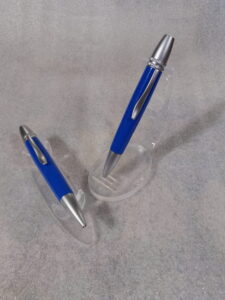
Deep Fake Double Down is available from Amazon and other online booksellers.





 For my new thriller,
For my new thriller, 


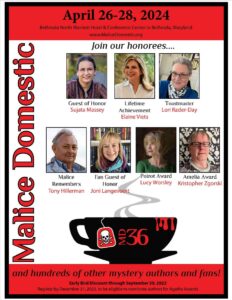 The Malice Domestic mystery conference is honoring me with the Lifetime Achievement Award for Malice 36 April 26-28, 2024. Malice Domestic is an annual fan convention in Bethesda, Maryland. I’m thrilled to be part of a star-studded line-up next year.
The Malice Domestic mystery conference is honoring me with the Lifetime Achievement Award for Malice 36 April 26-28, 2024. Malice Domestic is an annual fan convention in Bethesda, Maryland. I’m thrilled to be part of a star-studded line-up next year. The Dead of Night, my new Angela Richman, death investigator mystery, is available in book stores and online:
The Dead of Night, my new Angela Richman, death investigator mystery, is available in book stores and online:


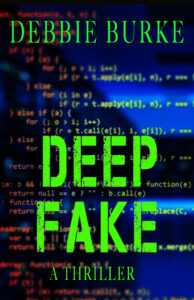

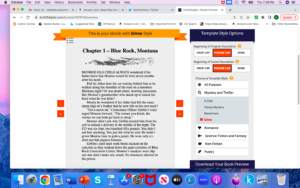
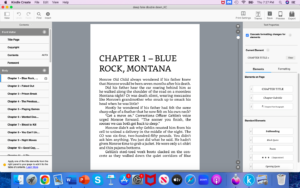
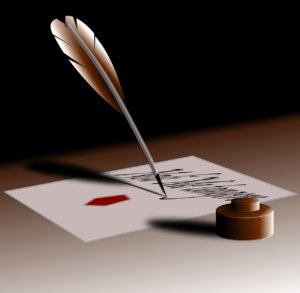 By Elaine Viets
By Elaine Viets
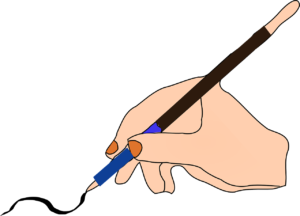


 One of the most amazing things about being an author is mingling within the writing community. Writers, as I’m sure you’ll agree, are some of the most generous, supportive, and kind humans on the planet.
One of the most amazing things about being an author is mingling within the writing community. Writers, as I’m sure you’ll agree, are some of the most generous, supportive, and kind humans on the planet. Do you really need to point out a typo in a tweet? We’re all fallible. Smile and move on.
Do you really need to point out a typo in a tweet? We’re all fallible. Smile and move on. I admit, when I first joined Twitter, an automated message to greet my new followers seemed like a good idea. Let me set the record straight—they are never a good idea.
I admit, when I first joined Twitter, an automated message to greet my new followers seemed like a good idea. Let me set the record straight—they are never a good idea. As writers, it shouldn’t surprise you to learn that even while silent, our bodies speak volumes. Nonverbal cues — body language — are the physical behavior, expressions, and mannerisms that communicate how we really feel.
As writers, it shouldn’t surprise you to learn that even while silent, our bodies speak volumes. Nonverbal cues — body language — are the physical behavior, expressions, and mannerisms that communicate how we really feel.